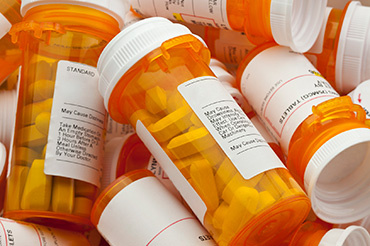Prescription Drug Misuse Prevention
Image

Definition: The misuse and abuse of prescription medications involves obtaining and taking these drugs without a prescription and for a nonmedical purpose. Teens and young adults are at risk of abusing prescription medications because they are widely available, free or inexpensive, and falsely believed to be safer than illicit drugs.
Magnitude of the Problem
Prescription drug use increased sharply from 1997 to 2007, and the abuse of these drugs is now the U.S.’s fastest growing drug problem (Executive Office of the President, Epidemic: Responding to America’s Prescription Drug Abuse Crisis, 2011).
- The 2011 Youth Risk Behavior Surveillance questionnaire found that almost 21% of high school students reported taking a prescription drug without a prescription at least once in their lifetime.
- According to the Archives of Internal Medicine (2011;171(11):1034-1036),more than three-quarters of youth and young adults ages 18–25 received painkillers only from nonmedical sources compared with 52% of those older than age 50.
- More teens abuse prescription drugs than cocaine, heroin, and methamphetamine (National Council on Alcoholism and Drug Dependence’s Prescription Drugs webpage).
Prevention
Strategies to reduce prescription medication abuse among youth include:
- Educating parents and caregivers about the importance of keeping prescription medications locked up;
- Encouraging parents and caregivers to talk with teens about the dangers of misusing and abusing prescription drugs and over-the-counter medications;
- Educating the public about how to properly dispose of old or unneeded medications;
- Training health care providers to screen patients for past or current substance use and to monitor patients’ use of prescribed medications; and
- Understanding the role of prescription drug monitoring programs (PDMPs) in reducing prescription medication misuse/abuse and working with PDMPs to increase their effectiveness.